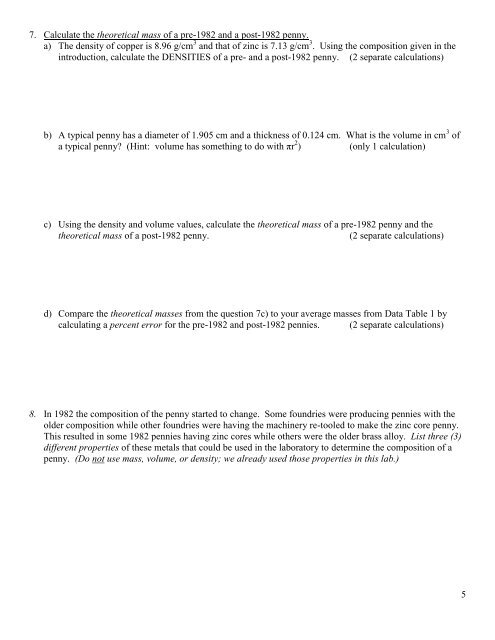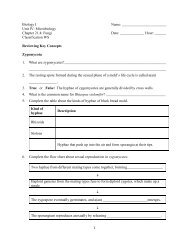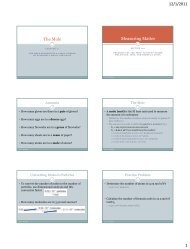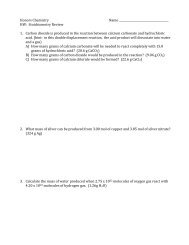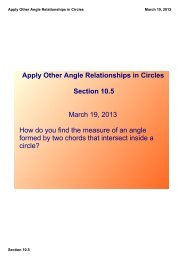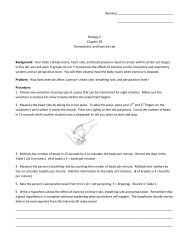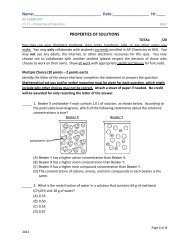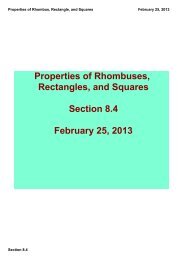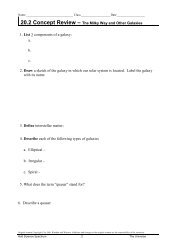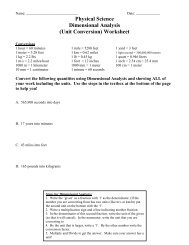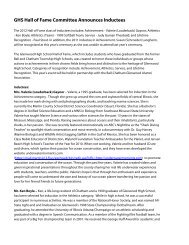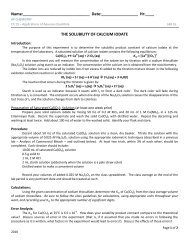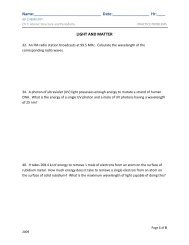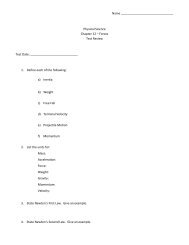Modeling Isotopes PreLab - Honors Chemistry
Modeling Isotopes PreLab - Honors Chemistry
Modeling Isotopes PreLab - Honors Chemistry
You also want an ePaper? Increase the reach of your titles
YUMPU automatically turns print PDFs into web optimized ePapers that Google loves.
7. Calculate the theoretical mass of a pre-1982 and a post-1982 penny.a) The density of copper is 8.96 g/cm 3 and that of zinc is 7.13 g/cm 3 . Using the composition given in theintroduction, calculate the DENSITIES of a pre- and a post-1982 penny. (2 separate calculations)b) A typical penny has a diameter of 1.905 cm and a thickness of 0.124 cm. What is the volume in cm 3 ofa typical penny? (Hint: volume has something to do with πr 2 ) (only 1 calculation)c) Using the density and volume values, calculate the theoretical mass of a pre-1982 penny and thetheoretical mass of a post-1982 penny.(2 separate calculations)d) Compare the theoretical masses from the question 7c) to your average masses from Data Table 1 bycalculating a percent error for the pre-1982 and post-1982 pennies. (2 separate calculations)8. In 1982 the composition of the penny started to change. Some foundries were producing pennies with theolder composition while other foundries were having the machinery re-tooled to make the zinc core penny.This resulted in some 1982 pennies having zinc cores while others were the older brass alloy. List three (3)different properties of these metals that could be used in the laboratory to determine the composition of apenny. (Do not use mass, volume, or density; we already used those properties in this lab.)5


